Which of the Ten Famous Scripts of China do you like best?
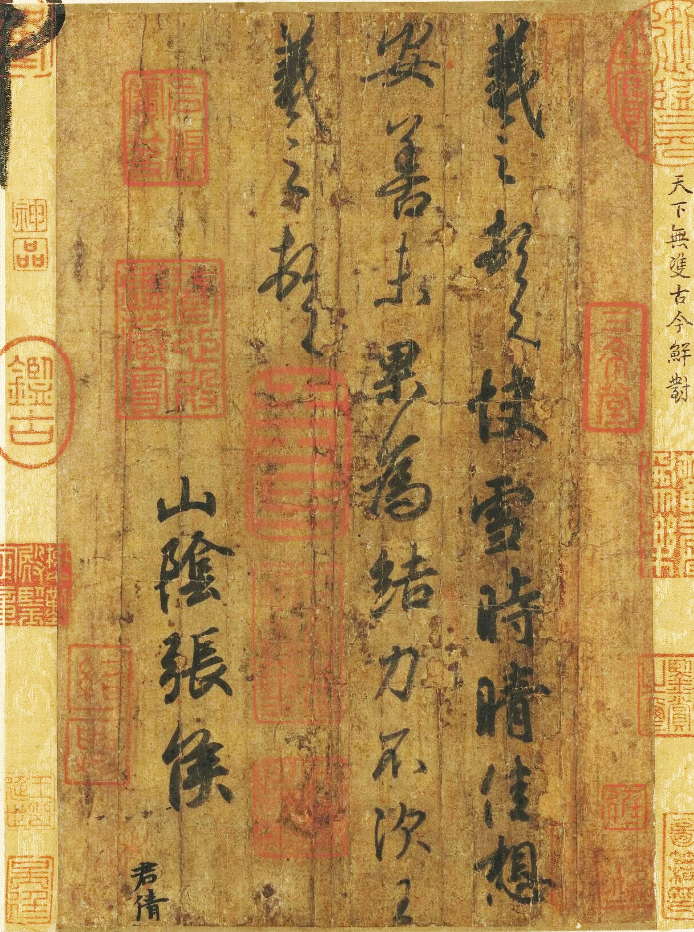
Jin Wang Xizhi's Quick Snow and Clear Sky Tie
一、San Xi Bao Tie "- Jin people's charm and unparalleled dual pride
It consists of Wang Xizhi's "Clear Skies at the Time of Fast Snow", Wang Xianzhi's "Mid Autumn", and Wang Xun's "Boyuan", each of which is the pinnacle of calligraphy by Jin people.
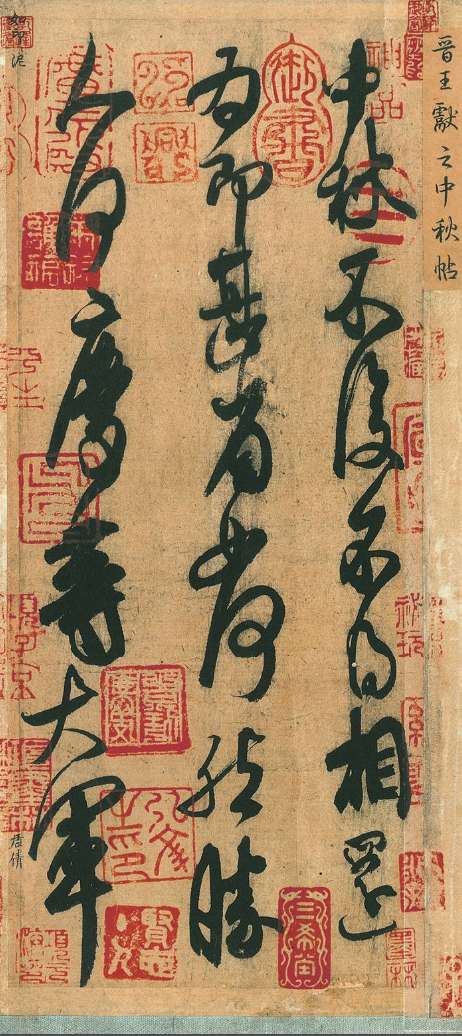
The Mid Autumn Poem Presented by Prince Jin
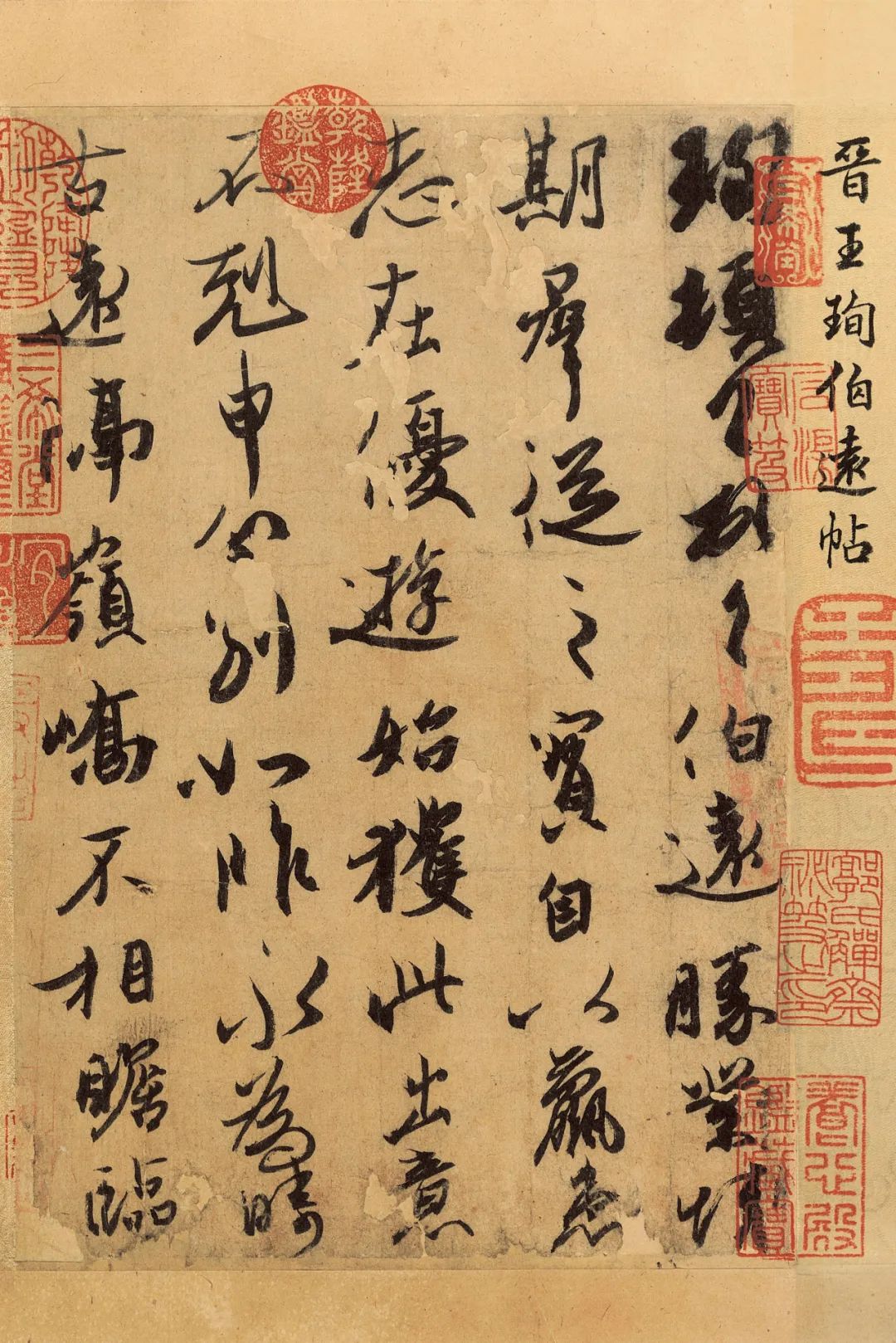
Jin Wangjun's distant friendship
The elegance of Wang Xizhi, the handsomeness of Wang Xianzhi, and the simplicity of Wang Xun together constitute the unique charm of calligraphy among the Jin people. Emperor Qianlong even hid them in the Hall of Nourishing the Heart and gave them the name "Sanxi Baote", which shows their preciousness.
二、Wang Xizhi's Preface to the Orchid Pavilion - At the pinnacle of cursive script, its charm endures forever

Preface to Lanting (Chu Linben) Tang Chu Suiliang
If there is a work that can represent the highest achievement of Chinese calligraphy, it is undoubtedly Wang Xizhi's "Preface to the Orchid Pavilion". This masterpiece, known as the "number one cursive script in the world", is not only the pinnacle of Wang Xizhi's personal calligraphy art, but also an immortal monument in the history of Chinese calligraphy.
The full text consists of 28 lines and 324 words, exuding a natural and vivid artistic beauty between the lines, making people feel as if they are in the midst of the gentle spring breeze and the gathering of talented people at the Orchid Pavilion.
三、Yan Zhenqing's "Sacrifice to My Nephew Manuscript" - The feelings of sadness and anger are vividly displayed on the paper

Tang Yan Zhenqing's Sacrifice to Nephew Manuscript
If "Preface to the Orchid Pavilion" is a model of the beauty of cursive script, then Yan Zhenqing's "Sacrificial Manuscript to My Nephew" has touched the hearts of countless people with its sincere emotions and unique artistic style.
This work was created by Yan Zhenqing in extreme grief and anger to pay tribute to his nephew Yan Jiming. The entire text consists of 23 lines and 234 words, each stroke and stroke full of the profound emotions and grief of a calligrapher, demonstrating the power of calligraphy art to transcend form and strike the soul directly.
四、Su Shi's "Poems on Cold Food in Huangzhou" - Unrestrained and unrestrained, with writing that follows the dragon and snake
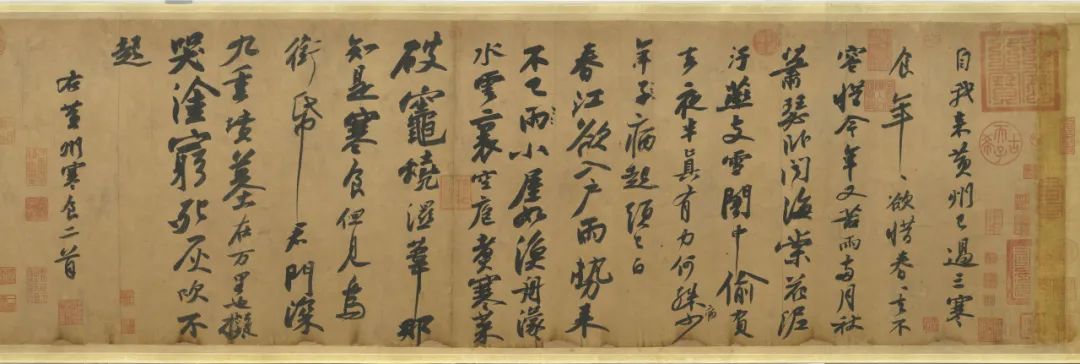
Su Shi's Huangzhou Cold Food Tie from the Northern Song Dynasty
Su Shi, a giant in the literary world of the Song Dynasty, also had outstanding achievements in the field of calligraphy. The Huangzhou Cold Food Poetry Collection "is one of its representative works in the art of running script.
The whole poem consists of 17 lines and 129 words. Su Shi expressed his frustration and helplessness when he was exiled to Huangzhou in the poem, and the principles of calligraphy complemented it perfectly. His bold and unrestrained brushwork, smooth and natural lines, seemed like a giant dragon walking on paper, showcasing Su Shi's open-minded and unrestrained personality and profound artistic skills.
五、Ouyang Xun's "Zhong Ni Meng Dian Tie" - Ancient and vigorous, the pinnacle of regular script
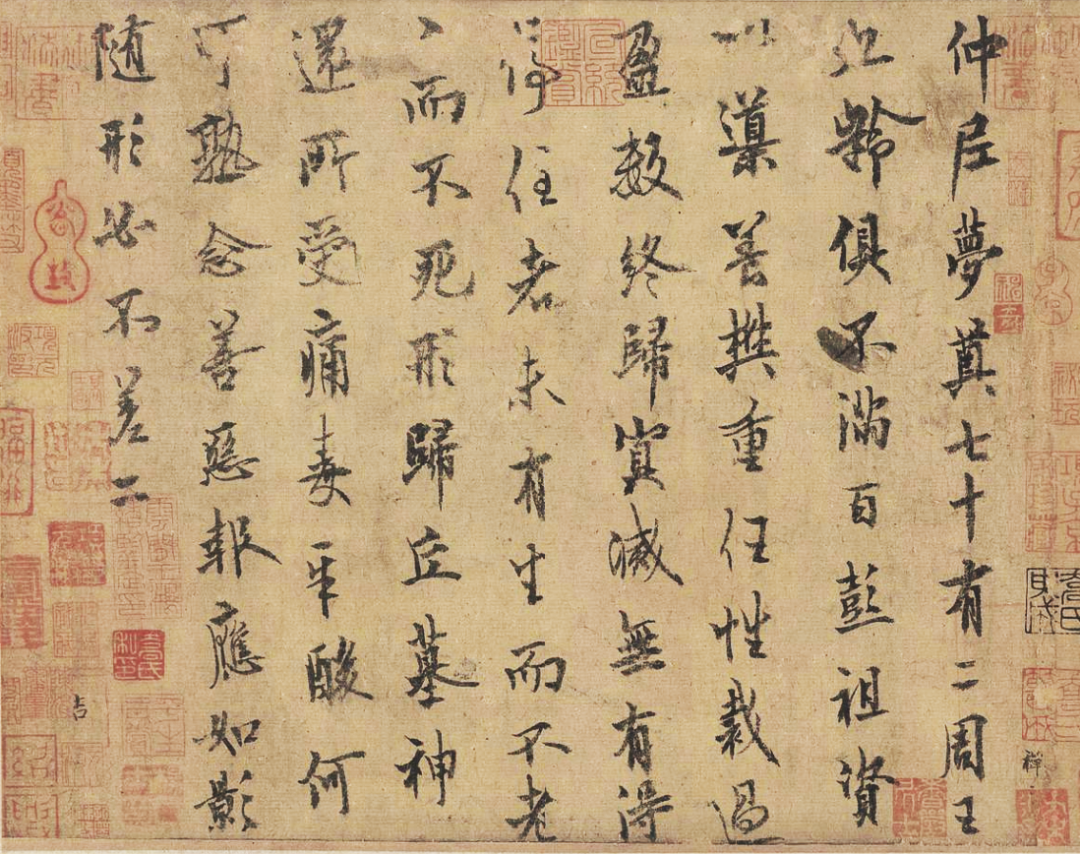
Tang Ouyang Xun Zhongni Dream Memorial Letter
Known as the "first regular script in China", its brushwork is vigorous and ancient, with light ink without losing its charm. The turning points are smooth and easy, and the upper and lower veins are clear and distinguishable.
The entire work has a stable and solid structure, with a calm and composed brushwork, and a vivid and fluent aura, showcasing Ouyang Xun's profound calligraphy skills and unique artistic style. This work is not only a model of regular script, but also an important milestone in the history of Chinese calligraphy.
六、Huai Su's "Autobiography" - The Ultimate Madness of Grass, Dragon Flying and Phoenix Dancing
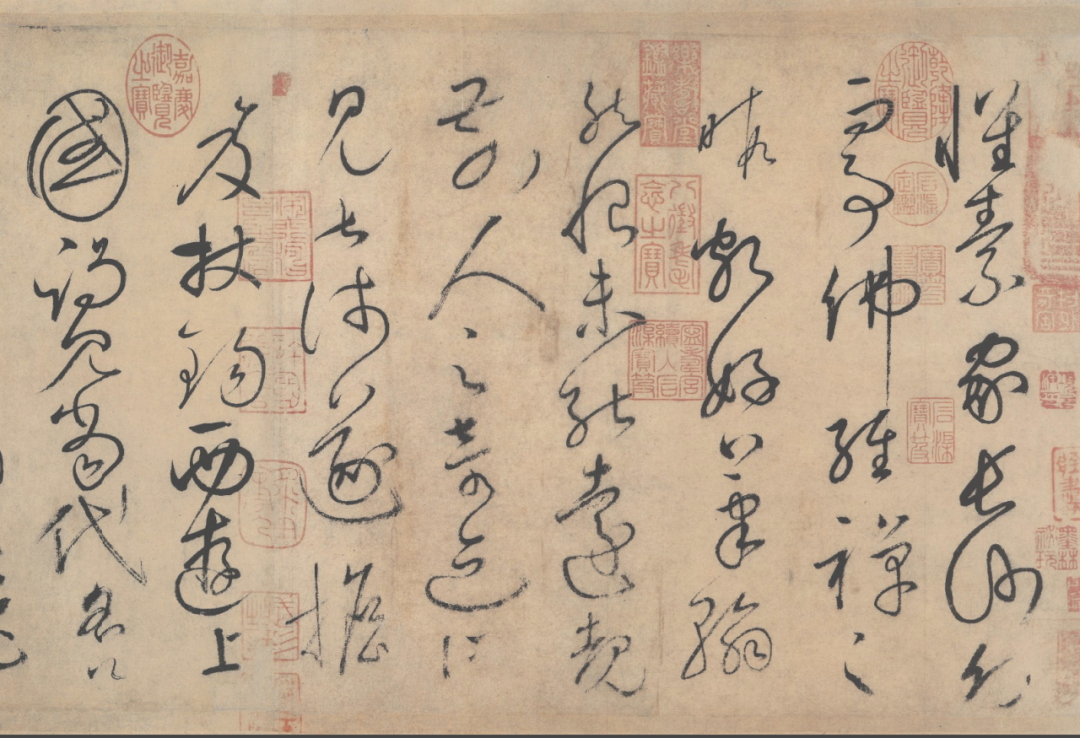
Part of Tang Huaisu's Self Narrative Post
If Ouyang Xun's "Zhong Ni Meng Dian Tie" is the pinnacle of regular script, then Huai Su's "Self Narrative Tie" is the ultimate expression of cursive script. This post is known as the "first cursive script in China" and is an outstanding representative of Huai Su's cursive script in his later years.
The whole piece is filled with galloping grass and sharp strokes, echoing up and down like a sudden wind and rain. The whole piece is vast and flowing, like dragons and snakes racing and lightning strikes, which is breathtaking. Huai Su, with his unique cursive style, fully expresses his inner passion and talent, showcasing the infinite charm of cursive art.
七、Mi Fu's "Shu Su Tie" - A Model of Beautiful Tie, Clear and Vigorous
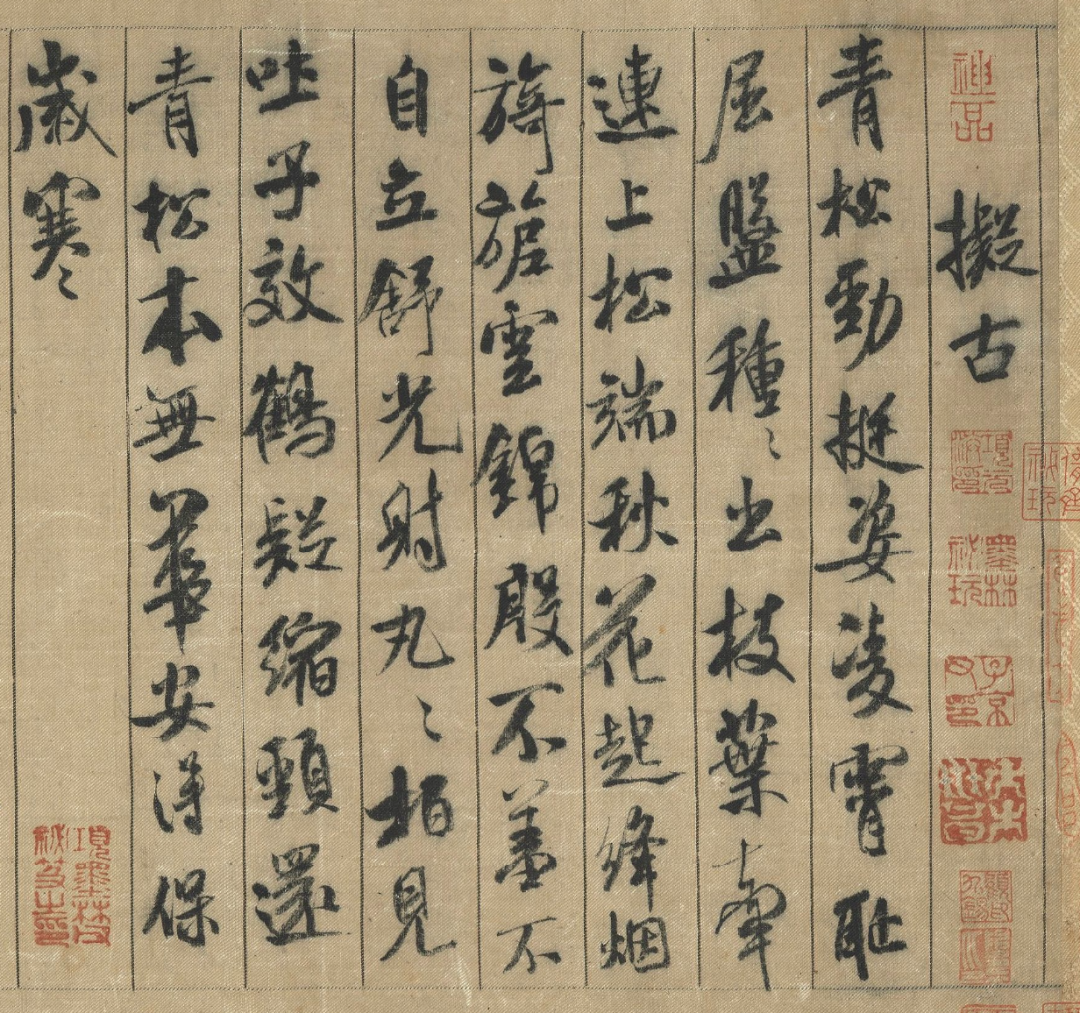
Northern Song Dynasty Mi Fu Shu Su Tie Partial
Mi Fu's "Shu Su Tie", also known as "Pseudo Ancient Poetry Tie", is known as the "number one beautiful Tie in China". This post is a collection of eight poems in various styles written by Mi Fu on Shu Su in the third year of Yuanyou in the Northern Song Dynasty (1088).
Mi Fu, with his unique brushwork, writes every stroke with ease, clarity, and vigor, which is breathtakingly beautiful. The entire work not only showcases Mi Fu's profound calligraphy skills, but also reveals his unique artistic personality and aesthetic taste.
八、Emperor Huizong of Song Dynasty's "Thousand Character cursive script" - Flying brushstrokes, unparalleled treasures of ink
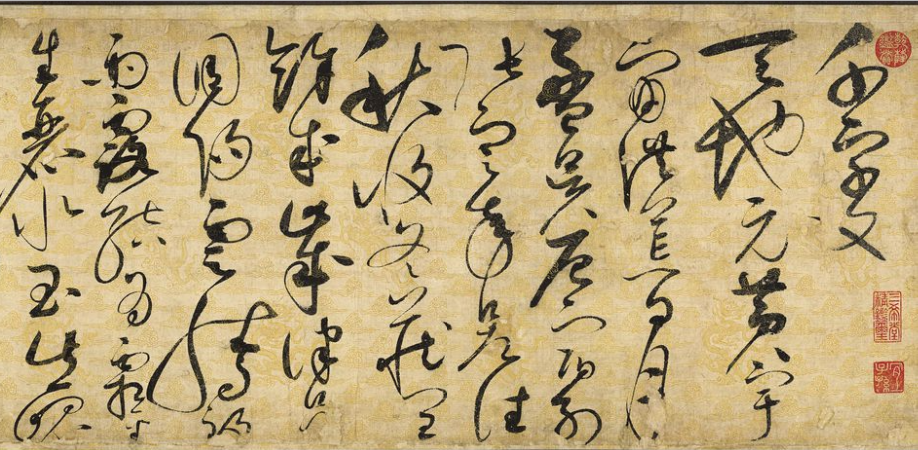
Partial Thousand Character Script of Zhao Jicao in Northern Song Dynasty
The calligraphy of Emperor Huizong of Song's "Thousand Character cursive script" is written with flying ink strokes on a three zhang long sheet of gold painted cloud dragon paper. The brushstrokes are unrestrained, smooth, unpredictable, and complete in one go, which is quite spectacular.
Emperor Huizong of Song, with his outstanding calligraphy talent and unique artistic achievements, pushed the art of cursive script to a new height. This work not only showcases Emperor Huizong of Song's profound calligraphy skills and unique artistic style, but is also known as the "unparalleled ink treasure of one person in the world" and has become a legendary work in the history of Chinese calligraphy.
九、Zhao Mengfu's "Ode to Red Cliffs in the Front and Back" - Round and vigorous, with a Wei Jin style and elegance
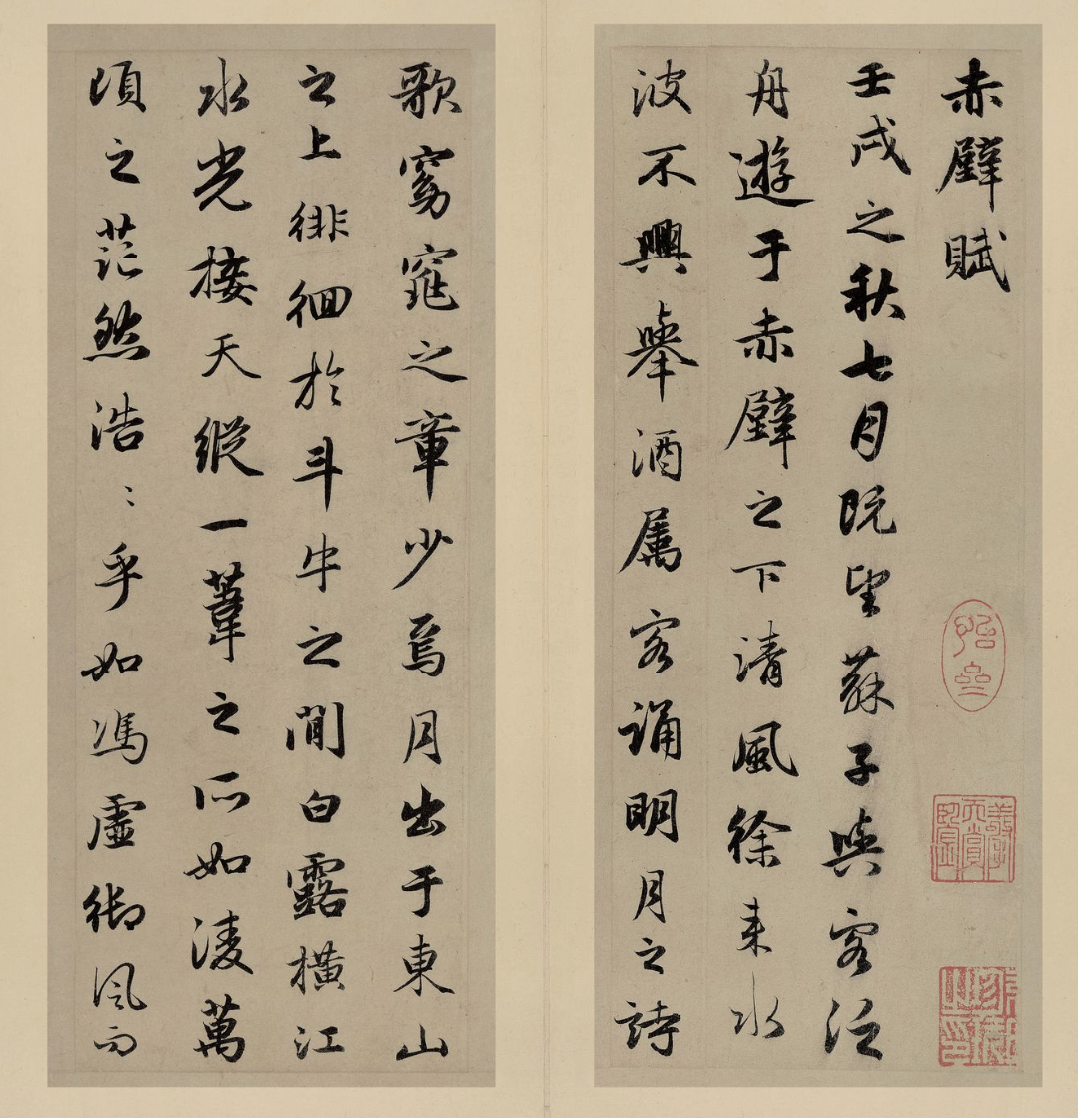
Partial Red Cliff Odes before and after the reign of Yuan Zhao Mengfu
Zhao Mengfu's "Red Cliff Ode" is a calligraphy work in which he wrote the prose of the same name as Su Shi. Zhao Mengfu, as a master of calligraphy in the Yuan Dynasty, is renowned for his round and vigorous brushstrokes.
This post has a round and powerful pen, a rigorous and varied structure, and embodies the charm of the Wei and Jin dynasties. Although Zhao Mengfu and Su Shi have spanned more than 200 years, their divine thoughts seem to touch each other in this timeless masterpiece, jointly interpreting a calligraphy legend that transcends time and space.
十、Zhu Yunming's "Poetry Tie" - With a charming and elegant character, it is a model of cursive script
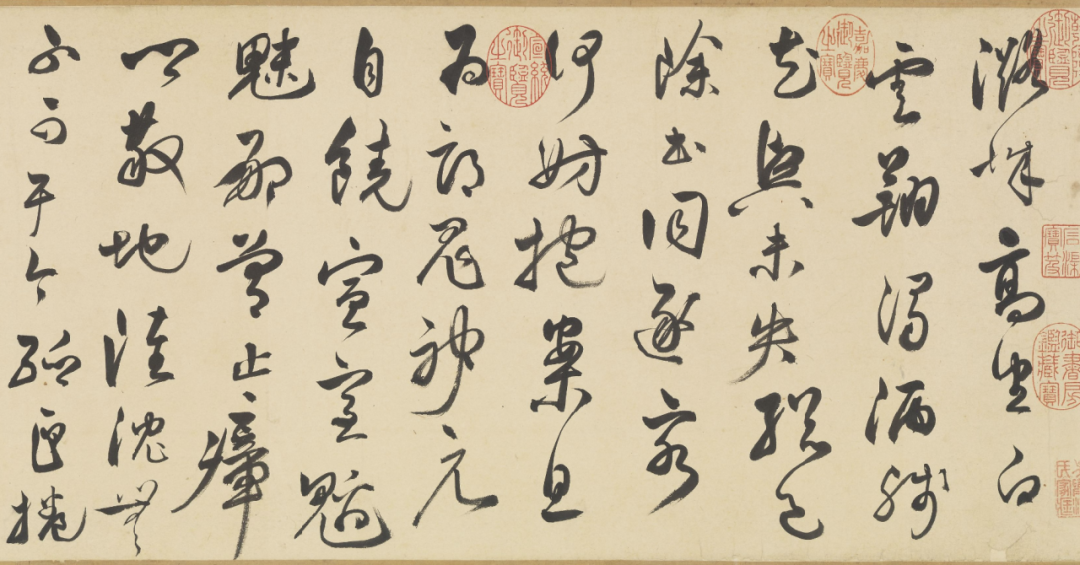
Mingzhu Yunming Poetry Collection Part
In this work, Zhu Yunming uses cursive script as a carrier to perfectly integrate his literati sentiment with calligraphy skills, showcasing a unique style and charm.
When Zhu Yunming wrote this post, he seemed to be completely immersed in a state of selflessness, with his pen following his heart and his intention to complete it. His cursive script has smooth and natural lines, compact and varied structure, with both a majestic momentum and delicate beauty.
